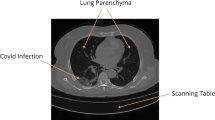Abstract
Studies have shown that the radiology community is still undecided on welcoming artificial intelligence (AI) as part of their workflow. The great features introduced by AI are creating fears that it will outright replace the radiologist. Others are pointing out existing obstacles in AI development to conclude that the radiologist will always have a place within the medical act. This hot debate is generating a large number of publications, where some are abusing the term AI. In this context, the present paper tackles a number of aspects regarding artificial intelligence in radiology trying to illustrate its current role. The current attitude towards this technology within the radiology community is discussed, highlighting some limitations of AI systems implementation and underlining advantages of using AI to assist the work of the radiologist. For instance, while the impact of AI in error reduction due to perceptual and cognitive differences between individual specialists is generally acknowledged, the racial and regional variations in anatomy and pathology as revealed by various imaging studies are not currently considered by AI systems. Certainly, artificial intelligence has several important advantages and research is undergoing to correct drawbacks. There is no doubt that AI will coexist with the radiologist for the foreseeable future.

Similar content being viewed by others
References
https://www.britannica.com/technology/artificial-intelligence. Accessed on 3 Dec 2020.
Cai L, Gao J, Zhao D. A review of the application of deep learning in medical image classification and segmentation. Ann Transl Med. 2020;8(11):713.
Gong B, Nugent JP, Guest W, et al. Influence of artificial intelligence on Canadian medical students’ preference for radiology specialty: a national survey study. Acad Radiol. 2019;26(4):566–77.
European Society of Radiology (ESR). Impact of artificial intelligence on radiology: a EuroAIM survey among members of the European Society of Radiology. Insights Imaging 2019; 10(1):105.
Pinto Dos Santos D, Giese D, Brodehl S, et al. Medical students' attitude towards artificial intelligence: a multicentre survey. Eur Radiol 2019; 29(4):1640–1646.
Ooi SKG, Makmur A, Soon AYQ, et al. Attitudes toward artificial intelligence in radiology with learner needs assessment within radiology residency programmes: a national multi-programme survey [published online ahead of print, 2019 Nov 4]. Singapore Med J.
Sathekge M, Lengana T, Maes A, et al. 68Ga-PSMA-11 PET/CT in primary staging of prostate carcinoma: preliminary results on differences between black and white South-Africans. Eur J Nucl Med Mol Imaging. 2018;45(2):226–34.
Handa VL, Lockhart ME, Fielding JR, et al. Racial differences in pelvic anatomy by magnetic resonance imaging. Obstet Gynecol. 2008;111(4):914–20.
Lin HH, Wang JP, Lin CL, et al. What is the difference in morphologic features of the lumbar vertebrae between Caucasian and Taiwanese subjects? A CT-based study: implications of pedicle screw placement via Roy-Camille or Weinstein method. BMC Musculoskelet Disord. 2019;20(1):252.
Dao Trong P, Beynon C, Unterberg A, Schneider T, Jesser J. Racial differences in the anatomy of the posterior fossa: neurosurgical considerations. World Neurosurg. 2018;117:e571–4.
Foley B, Cleveland RJ, Renner JB, Jordan JM, Nelson AE. Racial differences in associations between baseline patterns of radiographic osteoarthritis and multiple definitions of progression of hip osteoarthritis: the Johnston County Osteoarthritis Project. Arthritis Res Ther. 2015;17:366.
Marcus G. Deep learning: a critical appraisal. arXiv preprint arXiv:1801.00631, 2018.
Litjens G, Kooi T, Bejnordi BE, et al. A survey on deep learning in medical image analysis. Med Image Anal. 2017;42:60–88.
Waite S, Scott J, Gale B, Fuchs T, Kolla S, Reede D. Interpretive error in radiology. AJR Am J Roentgenol. 2017;208(4):739–49.
Bruno MA, Walker EA, Abujudeh HH. Understanding and confronting our mistakes: the epidemiology of error in radiology and strategies for error reduction. Radiographics. 2015;35(6):1668–76.
Abujudeh HH, Boland GW, Kaewlai R, et al. Abdominal and pelvic computed tomography (CT) interpretation: discrepancy rates among experienced radiologists. Eur Radiol. 2010;20(8):1952–7.
Eakins C, Ellis WD, Pruthi S, et al. Second opinion interpretations by specialty radiologists at a pediatric hospital: rate of disagreement and clinical implications. AJR Am J Roentgenol. 2012;199(4):916–20.
Funaki B, Szymski GX, Rosenblum JD. Significant on-call misses by radiology residents interpreting computed tomographic studies: Perception versus cognition. Emerg Radiol. 1997;4:290–4.
Hanna TN, Lamoureux C, Krupinski EA, Weber S, Johnson JO. Effect of shift, schedule, and volume on interpretive accuracy: a retrospective analysis of 2.9 million radiologic examinations. Radiology 2018; 287(1):205–212.
Brady AP. Error and discrepancy in radiology: inevitable or avoidable? Insights Imaging. 2017;8(1):171–82.
Pinto dos Santos D, Baeßler B. Big data, artificial intelligence, and structured reporting. Eur Radiol Exp 2018; 2:42.
Pinto dos Santos D, Brodehl S, Baeßler B, et al. Structured report data can be used to develop deep learning algorithms: a proof of concept in ankle radiographs. Insights Imaging 2019; 10:93.
Zimmerman SL, Kim W, Boonn WW. Informatics in radiology: automated structured reporting of imaging findings using the AIM standard and XML. Radiographics. 2011;31(3):881–7.
Funding
No funding was received for this work.
Author information
Authors and Affiliations
Corresponding author
Ethics declarations
Conflict of interest
The authors declare that they have no conflict of interest.
Rights and permissions
About this article
Cite this article
Marcu, L.G., Marcu, D. Points of view on artificial intelligence in medical imaging—one good, one bad, one fuzzy. Health Technol. 11, 17–22 (2021). https://doi.org/10.1007/s12553-020-00515-5
Received:
Accepted:
Published:
Issue Date:
DOI: https://doi.org/10.1007/s12553-020-00515-5




